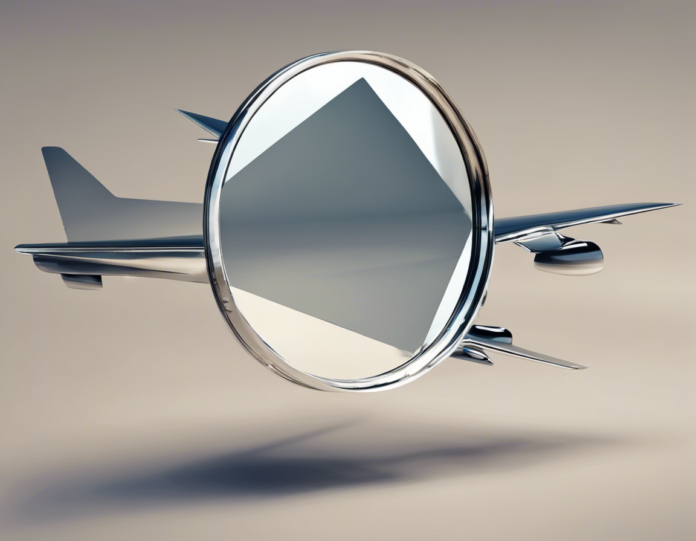Plane mirrors are common objects found in our everyday lives, from bathroom mirrors to car rearview mirrors. The reflection of light off a smooth, flat surface like a plane mirror is a fundamental principle of optics. Understanding the characteristics of plane mirror images and the principles behind them can provide valuable insights into how we visually perceive the world around us.
Reflection of Light
Before delving into the specifics of plane mirror images, it’s essential to grasp the basic concept of how reflection works. When light rays strike a smooth surface, such as a plane mirror, they bounce off according to the law of reflection. This law states that the angle of incidence (the angle at which the light ray strikes the surface) is equal to the angle of reflection (the angle at which the light ray bounces off the surface). This reflection process forms the basis for understanding how plane mirror images are produced.
Characteristics of Plane Mirror Images
1. Virtual Image
One of the key characteristics of a plane mirror image is that it is virtual. This means that the image appears to be behind the mirror, even though it is not a real object. When you stand in front of a plane mirror, the image you see is a representation of yourself that is not physically located behind the mirror but appears to be due to the reflection of light rays.
2. Laterally Inverted
Another characteristic of plane mirror images is that they are laterally inverted. This means that the left and right sides of the object appear reversed in the mirror image. For example, if you raise your right hand in front of a plane mirror, it appears as if your mirror image is raising its left hand. This reversal occurs because the light rays reflect off the mirror surface and reverse the orientation of the image.
3. Same Size as the Object
In a plane mirror, the size of the image produced is the same as the size of the object being reflected. This is because the distance between the mirror and the object affects how the image is perceived. As a result, the image you see in a plane mirror will always be the same size as the actual object.
4. Equal Distance
The image formed in a plane mirror appears to be at an equal distance behind the mirror as the object is in front of it. This is known as the virtual image distance and is a consistent characteristic of plane mirror images. Understanding this principle helps explain why objects in a mirror appear to be at a specific distance from the observer.
5. No Depth Perception
Plane mirror images lack depth perception, making them two-dimensional representations of three-dimensional objects. This is because the mirror reflects light in such a way that it only captures the front-facing appearance of objects, without conveying information about their depth or distance from the mirror.
Practical Applications of Plane Mirror Images
1. Mirrors in Periscopes
Periscopes use multiple plane mirrors to allow users to see around corners or over obstacles. By reflecting light off a series of mirrors, periscopes can provide a view of objects that would otherwise be out of sight. Understanding how plane mirrors create virtual images is crucial for the functionality of periscopes.
2. Rearview Mirrors in Vehicles
The rearview mirrors in vehicles are typically plane mirrors that provide drivers with a view of the area behind their vehicle. By understanding the characteristics of plane mirror images, drivers can interpret the reflected image correctly and make informed decisions while driving.
3. Mirrors in Optical Instruments
Various optical instruments, such as telescopes and microscopes, use mirrors to reflect and focus light. By leveraging the principles of plane mirror images, these instruments can produce clear and magnified views of distant objects or tiny specimens.
Frequently Asked Questions (FAQs)
1. What is the difference between a real image and a virtual image?
A real image is formed when light rays converge at a point, creating an actual image that can be projected onto a screen. In contrast, a virtual image is formed when light rays appear to diverge from a point behind the mirror, creating an image that cannot be projected.
2. Why do objects in a mirror appear reversed from left to right?
The reversal of left and right in a mirror image occurs because the mirror reflects light rays in a way that swaps the positions of the left and right sides of the object, resulting in a laterally inverted image.
3. How does the distance between an object and a plane mirror affect the size of the image?
The size of the image in a plane mirror is the same as the size of the object, regardless of the distance between the object and the mirror. This is a unique characteristic of plane mirror images and is independent of the object’s distance from the mirror.
4. Can a plane mirror produce a magnified image of an object?
Plane mirrors only produce images that are the same size as the object being reflected. They do not have the ability to magnify or reduce the size of the image, as their primary function is to create a reflective representation of the object.
5. Why is it challenging to gauge the distance of objects in a mirror?
Plane mirror images lack depth perception, making it difficult to accurately assess the distance of objects reflected in the mirror. Since mirrors only show the front-facing appearance of objects, they do not provide depth cues that aid in perceiving distance.
In conclusion, understanding the characteristics of plane mirror images and the principles of reflection can enhance our knowledge of how light behaves and how we perceive the world through mirrors. By grasping these fundamental concepts, we can appreciate the role that mirrors play in our daily lives and in various optical applications.

